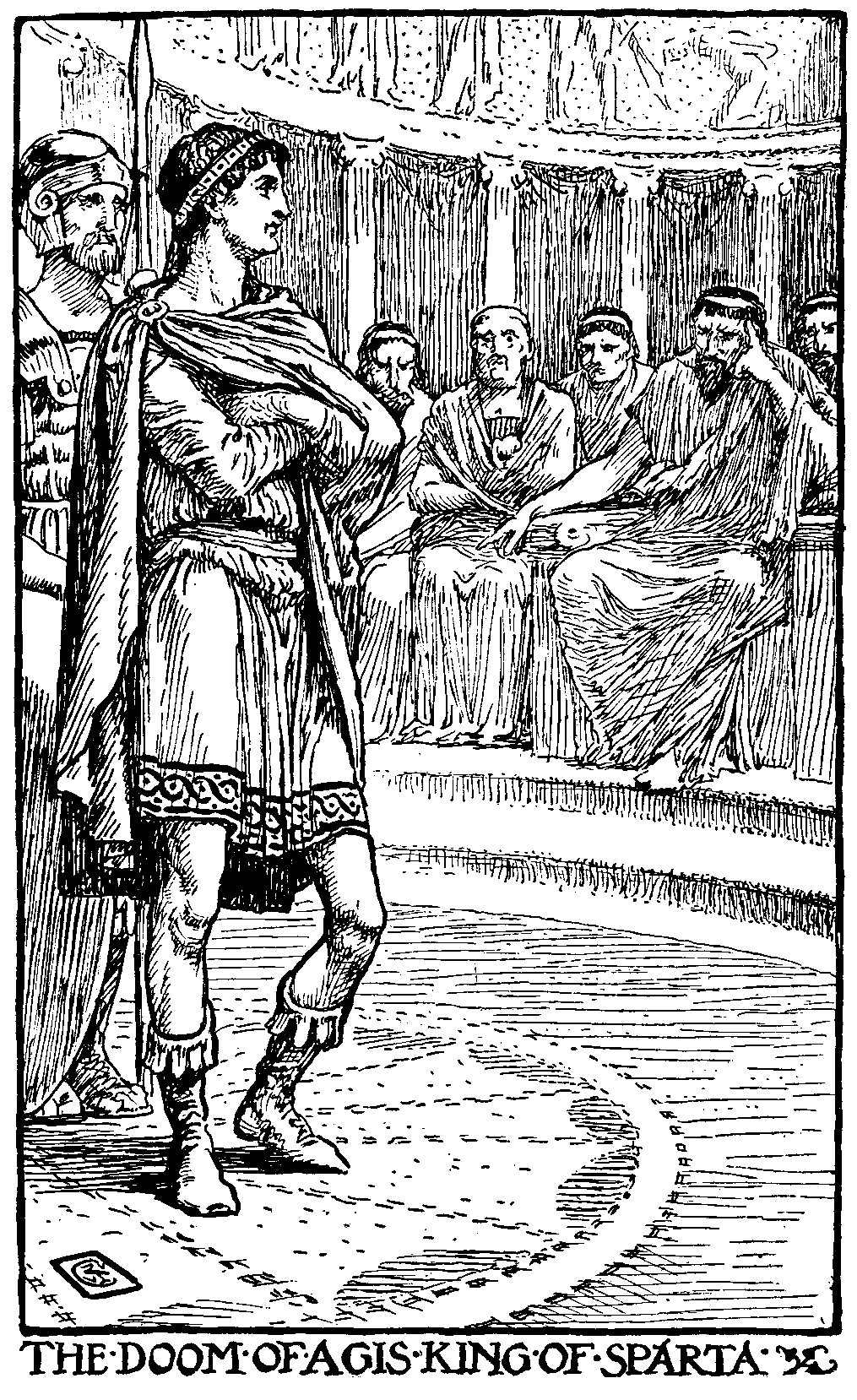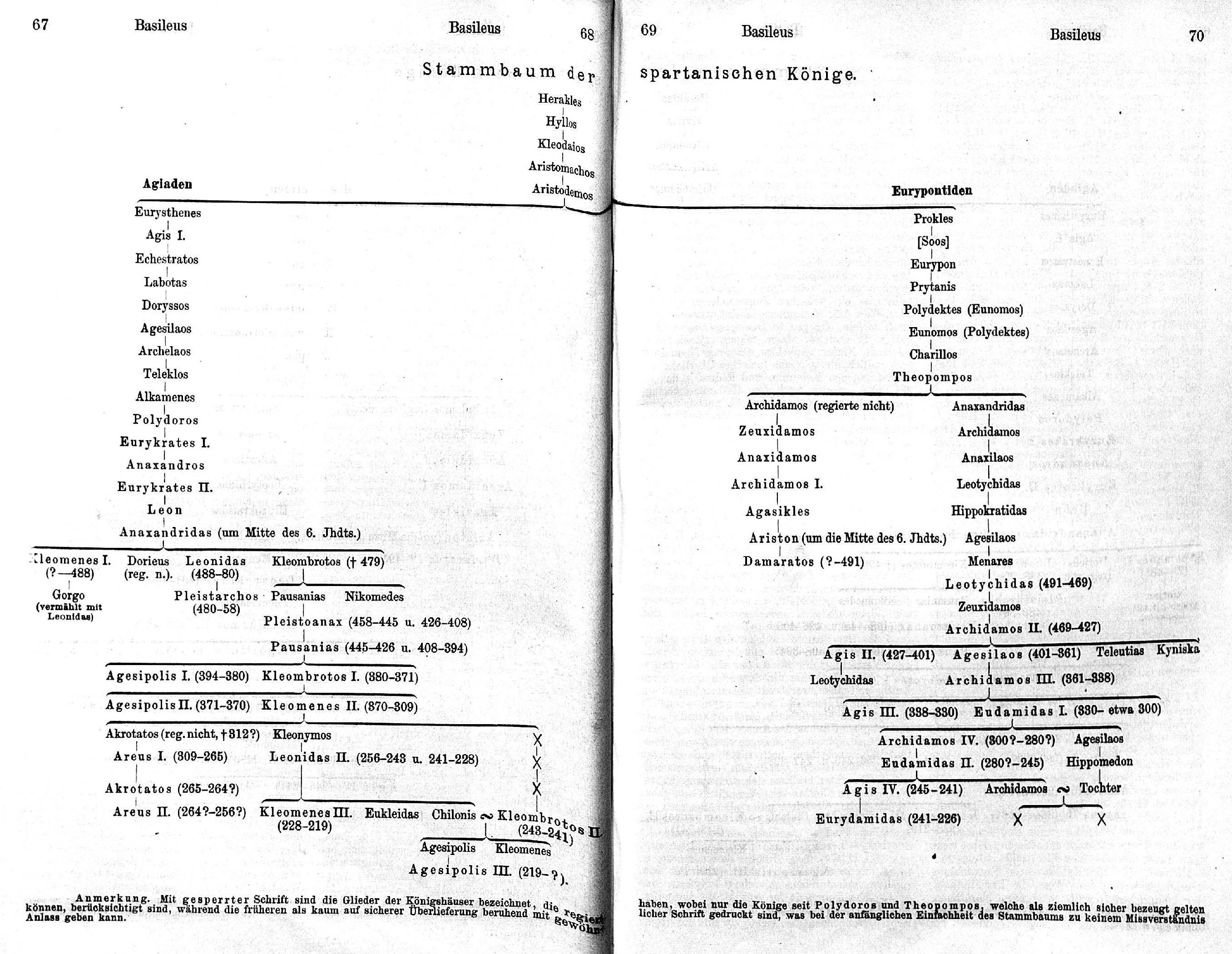|
Eudamidas III
Eudamidas III ( grc-gre, Εὐδαμίδας; reigned from 241 to 228 BC), son of Agis IV and Agiatis, daughter of Gylippus, was king of Sparta and a member of the Eurypontid dynasty. When his father was murdered he had just been born. Due to his minor age he never reigned and was succeeded by his uncle Archidamus V Archidamus V ( grc, Ἀρχίδαμος Ε΄) was the 27th of the Kings of Sparta of the Eurypontid line, reigning during 228 and 227 BC. He was the son of Eudamidas II and Agesistrata and through him the grandson of Archidamus IV, after whom .... 3rd-century BC rulers 3rd-century BC Spartans Eurypontid kings of Sparta Ancient child rulers {{AncientGreece-bio-stub ... [...More Info...] [...Related Items...] OR: [Wikipedia] [Google] [Baidu] |
Agis IV
Agis IV ( grc-gre, Ἄγις; c. 265 BC – 241 BC), the elder son of Eudamidas II, was the 25th king of the Eurypontid dynasty of Sparta. Posterity has reckoned him an idealistic but impractical monarch. Family background and accession Agis was the son of Eudamidas II () and grandson of Archidamus IV (), who belonged to the Eurypontid dynasty, one of the two royal families of Sparta (the other being the Agiads). The reign of Agis marks a re-emergence of the Eurypontids, who had disappeared from the records since the defeat of Archidamus IV against Demetrios Polyorketes in 294. His father is indeed the most obscure of all the Spartan kings, perhaps due to a mental or physical disability. Eudamidas II's dates of reign are therefore very conjectural. The traditional year of his death is c.245, but he may have died earlier (up to 263), in which case a regent was appointed during Agis' minority, as he was born c.265. The most likely candidate is his uncle Agesilaus, who played a ... [...More Info...] [...Related Items...] OR: [Wikipedia] [Google] [Baidu] |
Agiatis
Agiatis ( grc, Ἀγιᾶτις) (died 224 BC), was a Spartan queen, married first to king Agis IV and secondly to king Cleomenes III of Sparta. Life She was the daughter of the rich Spartan citizen Gilippo. Agiatis was described as a beautiful, and was the owner of a large private fortune. She firstly married king Agis IV, and actively supported his radical reforms. After the death of Agis IV, the co-king Leonidas forced her to marry his son and heir, the future Cleomenes III. Agiatis is credited with having convinced Cleomenes of the need to continue the reforms of her first husband, and to have changed his initial dislike of them.Tullia Linders (1995). Vem är vem i antikens Grekland. Rabén Prisma. When he succeeded to the throne, he introduced the reforms of her first husband. She died in 224 BC. Issue * Eudamidas III Eudamidas III ( grc-gre, Εὐδαμίδας; reigned from 241 to 228 BC), son of Agis IV and Agiatis, daughter of Gylippus, was king of Sparta and ... [...More Info...] [...Related Items...] OR: [Wikipedia] [Google] [Baidu] |
King Of Sparta
For most of its history, the Ancient Greece, ancient Greek polis, city-state of Sparta in the Peloponnese was ruled by kings. Sparta was unusual among the Greek city-states in that it maintained its kingship past the archaic Greece, Archaic age. It was even more unusual in that it had diarchy, two kings simultaneously, who were called the ''archagetai'', coming from two separate dynasty, lines. According to tradition, the two lines, the Agiad dynasty, Agiads (, ) and Eurypontids (, ), were respectively descended from the twins Eurysthenes and Procles, the descendants of Heracles, who supposedly conquered Sparta two generations after the Trojan War. The dynasties themselves, however, were named after the twins' grandsons, the kings Agis I and Eurypon, respectively. The Agiad line was regarded as being senior to the Eurypontid line.Cartledge, Paul, ''The Spartans'', Vintage Books, 2003. Although there are lists of the earlier purported Kings of Sparta, there is little evidence for th ... [...More Info...] [...Related Items...] OR: [Wikipedia] [Google] [Baidu] |
Archidamus V
Archidamus V ( grc, Ἀρχίδαμος Ε΄) was the 27th of the Kings of Sparta of the Eurypontid line, reigning during 228 and 227 BC. He was the son of Eudamidas II and Agesistrata and through him the grandson of Archidamus IV, after whom he was named. After his brother Agis IV was murdered in 241 BC, he fled to Messenia. In 228 (or 227) he was ordered back to Sparta by King Cleomenes III of the Agiad line, who had no counterpart on the throne by then, after the death of Eudamidas III Eudamidas III ( grc-gre, Εὐδαμίδας; reigned from 241 to 228 BC), son of Agis IV and Agiatis, daughter of Gylippus, was king of Sparta and a member of the Eurypontid dynasty. When his father was murdered he had just been born. Due to his ..., the son of Agis IV. He was assassinated shortly afterwards. Polybius claims that he was killed by Cleomenes. References {{DEFAULTSORT:Archidamus 05 3rd-century BC rulers 3rd-century BC Spartans Eurypontid kings of Sparta 220s BC de ... [...More Info...] [...Related Items...] OR: [Wikipedia] [Google] [Baidu] |
Kings Of Sparta
For most of its history, the ancient Greek city-state of Sparta in the Peloponnese was ruled by kings. Sparta was unusual among the Greek city-states in that it maintained its kingship past the Archaic age. It was even more unusual in that it had two kings simultaneously, who were called the ''archagetai'', coming from two separate lines. According to tradition, the two lines, the Agiads (, ) and Eurypontids (, ), were respectively descended from the twins Eurysthenes and Procles, the descendants of Heracles, who supposedly conquered Sparta two generations after the Trojan War. The dynasties themselves, however, were named after the twins' grandsons, the kings Agis I and Eurypon, respectively. The Agiad line was regarded as being senior to the Eurypontid line.Cartledge, Paul, ''The Spartans'', Vintage Books, 2003. Although there are lists of the earlier purported Kings of Sparta, there is little evidence for the existence of any kings before the middle of the sixth century BC or ... [...More Info...] [...Related Items...] OR: [Wikipedia] [Google] [Baidu] |
3rd-century BC Rulers
The 3rd century was the period from 201 ( CCI) to 300 (CCC) Anno Domini (AD) or Common Era (CE) in the Julian calendar.. In this century, the Roman Empire saw a crisis, starting with the assassination of the Roman Emperor Severus Alexander in 235, plunging the empire into a period of economic troubles, barbarian incursions, political upheavals, civil wars, and the split of the Roman Empire through the Gallic Empire in the west and the Palmyrene Empire in the east, which all together threatened to destroy the Roman Empire in its entirety, but the reconquests of the seceded territories by Emperor Aurelian and the stabilization period under Emperor Diocletian due to the administrative strengthening of the empire caused an end to the crisis by 284. This crisis would also mark the beginning of Late Antiquity. In Persia, the Parthian Empire was succeeded by the Sassanid Empire in 224 after Ardashir I defeated and killed Artabanus V during the Battle of Hormozdgan. The Sassanids ... [...More Info...] [...Related Items...] OR: [Wikipedia] [Google] [Baidu] |
3rd-century BC Spartans
The 3rd century was the period from 201 (Roman numerals, CCI) to 300 (Roman numerals, CCC) Anno Domini (AD) or Common Era (CE) in the Julian calendar.. In this century, the Roman Empire saw a Crisis of the Third Century, crisis, starting with the assassination of the Roman Emperor Severus Alexander in 235, plunging the empire into a period of economic troubles, barbarian incursions, political upheavals, civil wars, and the split of the Roman Empire through the Gallic Empire in the west and the Palmyrene Empire in the east, which all together threatened to destroy the Roman Empire in its entirety, but the reconquests of the seceded territories by Emperor Aurelian and the stabilization period under Emperor Diocletian due to the administrative strengthening of the empire caused an end to the crisis by 284. This crisis would also mark the beginning of Late Antiquity. In Persia, the Parthian Empire was succeeded by the Sassanid Empire in 224 after Ardashir I defeated and killed Art ... [...More Info...] [...Related Items...] OR: [Wikipedia] [Google] [Baidu] |
Eurypontid Kings Of Sparta
For most of its history, the ancient Greek city-state of Sparta in the Peloponnese was ruled by kings. Sparta was unusual among the Greek city-states in that it maintained its kingship past the Archaic age. It was even more unusual in that it had two kings simultaneously, who were called the ''archagetai'', coming from two separate lines. According to tradition, the two lines, the Agiads (, ) and Eurypontids (, ), were respectively descended from the twins Eurysthenes and Procles, the descendants of Heracles, who supposedly conquered Sparta two generations after the Trojan War. The dynasties themselves, however, were named after the twins' grandsons, the kings Agis I and Eurypon, respectively. The Agiad line was regarded as being senior to the Eurypontid line.Cartledge, Paul, ''The Spartans'', Vintage Books, 2003. Although there are lists of the earlier purported Kings of Sparta, there is little evidence for the existence of any kings before the middle of the sixth century BC or ... [...More Info...] [...Related Items...] OR: [Wikipedia] [Google] [Baidu] |



